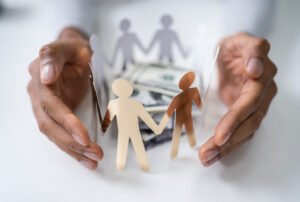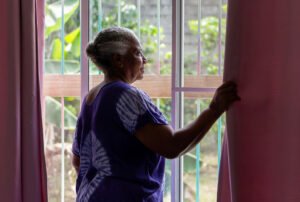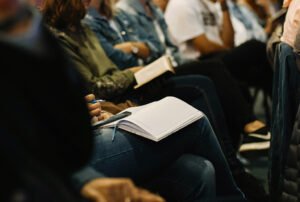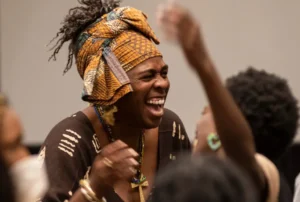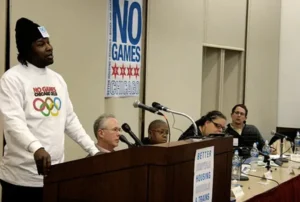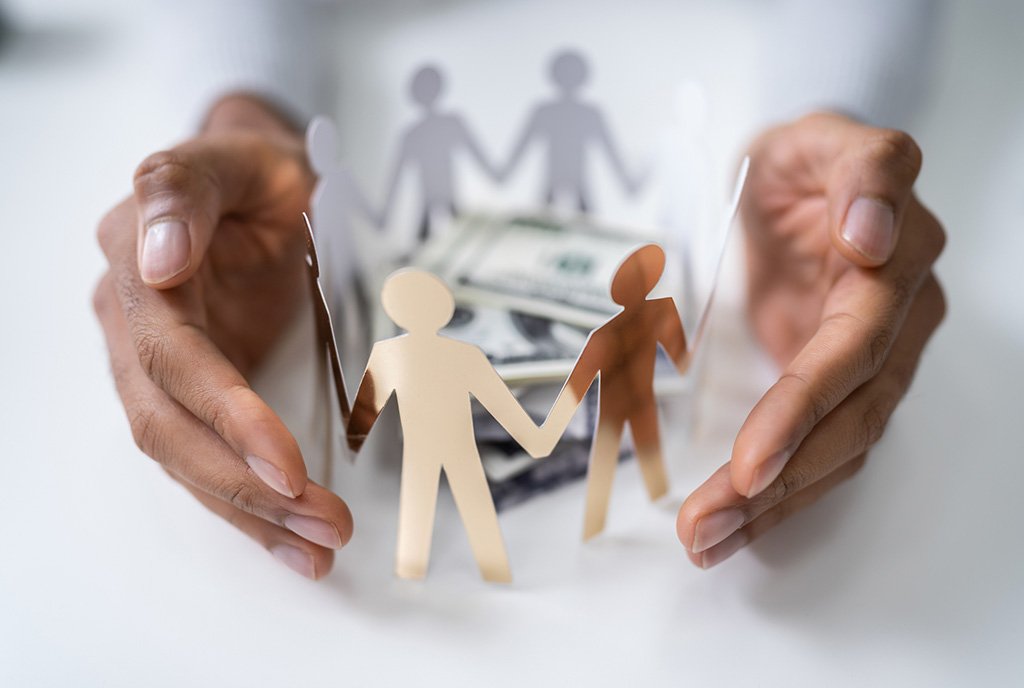
This article was updated on January 2, 2025.
In June of 1968—just a couple months after her husband, Reverend Dr. Martin Luther King, Jr, was assassinated—Coretta Scott King took to the stage at a rally in Washington, DC, organized by the Poor People’s Campaign, the movement her husband was leading at the time of his death to address what he called the triple evils: racism, economic exploitation, and militarism.
In her speech, King reminded the crowd of over 50,000 people that violence manifests in many different forms. Sometimes, violence looks like a 39-year-old activist being killed for simply striving for racial and economic justice. But it also manifests in systemic ways that are often overlooked.
After all, when Dr. King was killed, he was in Memphis supporting striking sanitation workers who were spurred to action after two fellow workers were crushed to death inside a garbage truck. On a rainy day, Echol Cole and Robert Walker sought refuge inside the truck because segregation laws forbid them from sheltering inside a building. Racism and poverty were the forms of violence that made Cole and Walker vulnerable and ultimately led to their deaths.
“I must remind you that starving a child is violence,” King said in her speech. “Suppressing a culture is violence. Neglecting school children is violence. Punishing a mother and her child is violence. Discrimination against a working man is violence. Ghetto housing is violence. Ignoring medical needs is violence. Contempt for poverty is violence.”
The shooting death of UnitedHealthcare CEO Brian Thompson and the acquittal of Daniel Penny for the chokehold death of Jordan Neely—both occurring in recent weeks—have sparked conversations about violence in America and whose lives are considered more valuable.
As it becomes increasingly evident that high-ranking elected officials, like Trump, are uninterested in addressing the myriad ways poverty violence leads to early deaths, organizations providing critical social services will play an even more crucial role in helping people to access the resources they need when the government falls short.
The problem is, however, that many of these organizations are also underresourced, and many nonprofit workers are struggling to survive themselves.
Every year, thousands of people die because of a lack of healthcare coverage. They die because they live in a country that continues to ignore medical need.
Unequal Treatment
As Lex McMenamin wrote for Teen Vogue, media attention and resources poured into finding Thompson’s killer, but much less was given to finding the killer of 17-year-old Yeremi Colino, a migrant boy who was stabbed to death in New York just one day after Thompson was shot.
Likewise, Jordan Neely died a violent death last year after Daniel Penny, a Marine veteran, placed him in a chokehold until he could no longer breathe.
Neely had already encountered violence as a poor Black man living with a mental disability. At the time of his death, Neely was homeless, named on the list of 50 people experiencing homelessness in New York who were most in need of help. In the last moments of his life, Neely screamed out that he was hungry, thirsty, and tired of having nothing.
Instead of being met with care, he was choked to death by a man who was subsequently acquitted. This is what contempt for poverty, in King’s words, looks like.
Sign up for our free newsletters
Subscribe to NPQ's newsletters to have our top stories delivered directly to your inbox.
By signing up, you agree to our privacy policy and terms of use, and to receive messages from NPQ and our partners.
Incoming President Trump has echoed these disparate responses to violence—he has lauded Penny and effectively discarded Neely, while publicly mourning Thompson’s death and disparaging Luigi Mangione, Thompson’s alleged killer.
Even as nonprofit workers seek to address systemic issues related to poverty violence, they are often combating the same issues in their own lives.
Meanwhile, 68,000 people die every year in the United States, due to our profit-driven health insurance system. Tellingly, Thompson’s death sparked public outrage at insurance companies and conversations among those who have been denied healthcare coverage—or watched their loved ones die after being denied coverage.
A University of California, Riverside paper published last year in the Journal of the American Medical Association found that poverty is the fourth leading cause of death in America. Every year, thousands of people die because of a lack of healthcare coverage. They die because they live in a country that continues to ignore medical need.
Nonprofit Workers in Poverty
The nonprofit sector is not immune from this trend. As Jan Masaoka recently wrote in NPQ about the sector’s struggle to provide affordable health insurance to its workers, “As nonprofit staff and volunteers, we are in the same disgruntled and sometimes desperate state of the US public in general.”
NPQ noted earlier this year that 22 percent of nonprofit workers themselves live in poverty. The finding comes from a first-of-its-kind report produced by Independent Sector, which advocates for the health of the nonprofit sector, and United for ALICE, a research organization that works to understand and address ALICE (Asset-Limited, Income-Constrained, and Employed) households.
“Even the lack of willpower to help humanity is a sick and sinister form of violence”
The ALICE measure paints a more robust picture of what poverty looks like in America compared to the Federal Poverty Level (FPL), which was created in the 1960s and many experts now believe to be outdated.
According to the FPL, for instance, 647,047 nonprofit workers are living in poverty. When the ALICE measure is used, this number rises to over 2.4 million. This represents a substantial portion of the sector, which collectively employs almost 12.8 million people.
As the report notes, even as nonprofit workers seek to address systemic issues related to poverty violence, they are often combating the same issues in their own lives. According to the report, one in five nonprofit workers live paycheck to paycheck, unable to afford basic expenses.
Social services is the third-largest nonprofit subsector, and over 30 percent of those working in it—providing critical assistance like individual and family services, childcare services, food, housing, and emergency services—face financial hardship. This disparity is significantly higher for Black women and those living with disabilities.
These numbers help underscore the growing concern about inequality in America. The fact that people who work full time, people who work to lift up others, are still impacted by poverty shows the vast need for systemic resources to address systemic problems.
At this moment, it is critical to look back at history and remember that the struggle for equality is a long one, but it must continue. Nearly 60 years ago, Coretta Scott King reminded people that doing nothing is not an option. Her words still ring true today: “Even the lack of willpower to help humanity is a sick and sinister form of violence.”


